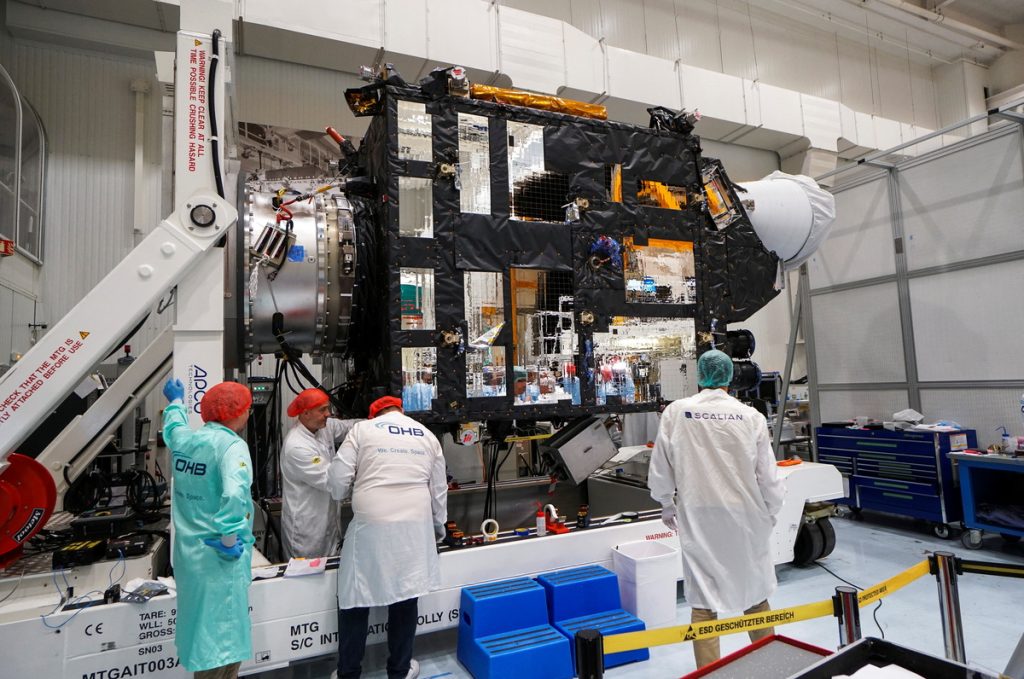Beyond launch: Harnessing allied space capabilities for exploration purposes
FORWARD DEFENSE
ISSUE BRIEF
The “United States Space Priorities Framework,” released in December 2021, confirmed the White House’s commitment to American leadership in space.1“United States Space Priorities Framework,” White House, December 2021, https://www.whitehouse.gov/wp-content/uploads/2021/12/united-states-space-priorities-framework-_-december-1-2021.pdf. Space activities deliver immense benefits to humankind. For example, satellite imaging alone is crucial for improvements in daily life such as weather monitoring as well as for grand challenges like the fight against climate change. Such breakthrough discoveries in space pave the way for innovation and new economies on Earth. Exploration is at the cutting edge of this process: it expands humankind’s knowledge of the universe, transforming the unknown into the supremely challenging, expensive, risky, and promising. US allies and partners accelerate this transformation via scientific and technical achievements as well as processes, relationships, and a shared vision for space exploration. By integrating these allied capabilities, the United States and its allies and partners set the stage for safe and prosperous space geopolitics and economy in the decades to come.
However, harnessing the capabilities of US allies and partners for space exploration is complex, requiring the balance of relatively short-term progress with far-horizon strategy. Space exploration has changed since the US-Soviet space race of the 1960s. In today’s rapidly evolving technological and geopolitical environment, it is unclear whether the processes, relationships, and vision that previously enabled allied cooperation in space, epitomized by the International Space Station (ISS), will keep pace. Here, China is viewed as the preeminent competitor for exploration goals and capabilities—as well as the major competitor for long-term leadership in space.2“China’s Space Program: A 2021 Perspective,” State Council Information Office of the People’s Republic of China, January 28, 2022, http://www.china.org.cn/china/2022-01/28/content_78016843.htm. This development drives fears of space militarization and weaponization, prompting protectionist legislation, investment screening, and industrial policies that can disrupt collaboration among the United States and its key allies and partners.3“Rethinking Export Controls: Unintended Consequences and the New Technological Landscape,” Commentary series on expert controls, Center for a New American Security, accessed March 23, 2023, https://www.cnas.org/publications/reports/rethinking-export-controls-unintended-consequences-and-the-new-technological-landscape. Further complication stems from the rise of commercial space, with opportunities and challenges due to the decentralization, democratization, and demonetization of technologies for robotic and crewed space exploration.
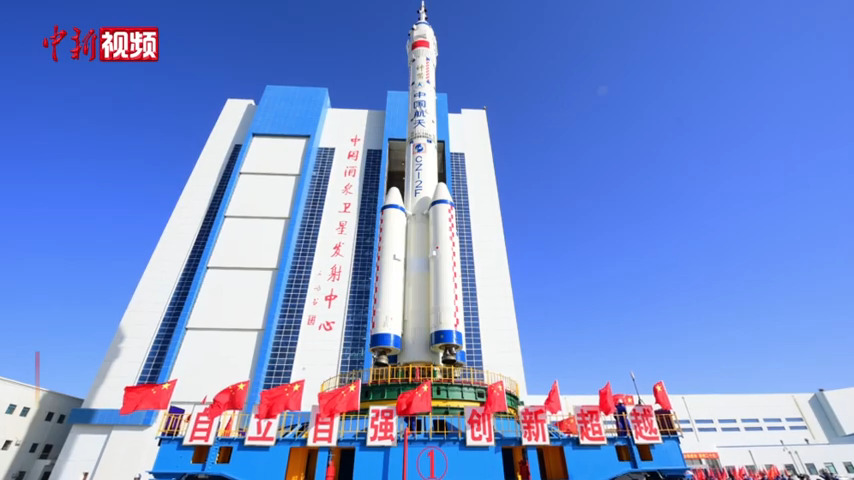
This paper serves as a primer for current US space exploration goals and capabilities that will be critical to achieving them. It highlights arenas where US allies and partners are strongly positioned to jointly accelerate space exploration while also benefitting life on Earth. This paper concludes with recommended actions—gleaned from interviews with international experts in space exploration—for the US government as well as allied and partner governments to increase the number and impact of global stakeholders in space exploration, to remove friction in collaboration, and to guide the future of space toward democratic values.
Current space exploration efforts
Over the next few decades, US and allied space exploration will integrate uncrewed (robotic) and crewed missions to achieve scientific discovery, technological advancement, economic benefits, national prestige, and planetary defense.
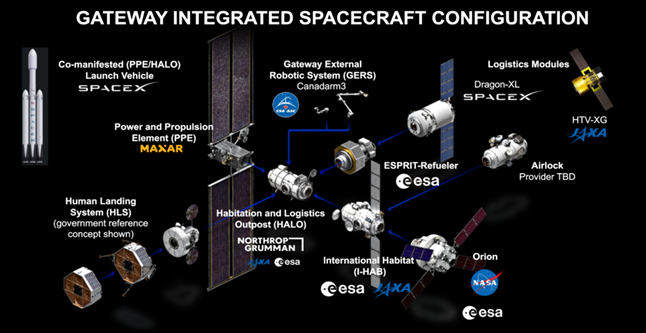
Uncrewed space exploration missions generally focus on expanding fundamental scientific knowledge and laying the foundation for future activities such as resource extraction. Collaborators include the National Aeronautics and Space Administration (NASA), the European Space Agency (ESA) and member space agencies, and the space agencies of India, Japan, South Korea, Israel, and the United Arab Emirates (UAE), with public-private partnerships delivering additional capabilities.4“Our Missions,” European Space Agency, accessed February 14, 2023, https://www.esa.int/ESA/Our_Missions; and Gary Daines, “Solar System Missions,” National Aeronautics and Space Administration, March 11, 2015, http://www.nasa.gov/content/solar-missions-list. Several missions to Mars will study the planet’s geology, atmosphere, and possible past or current life, with sample-return missions currently scheduled by NASA and the ESA for the early 2030s.5Timothy Haltigin et al., “Rationale and Proposed Design for a Mars Sample Return (MSR) Science Program,” Astrobiology 22, no. S1, June 2022, https://doi.org/10.1089/ast.2021.0122. The search for conditions suitable to life will be extended to other locations in the solar system, such as the moons of Jupiter and Saturn. Robotic missions will continue to increase understanding of the Sun, Mercury, Venus, the Moon, asteroids, Jupiter and its moons, and deep space. Observational studies of planets outside our solar system, black holes, comets, stars, and galaxies will be enabled by space telescopes and other imaging modalities. Uncrewed exploration goals are also being pursued by the China National Space Administration, with particular attention to its planned International Lunar Research Station.6Andrew Jones, “China Outlines Pathway for Lunar and Deep Space Exploration,” SpaceNews, November 28, 2022, https://spacenews.com/china-outlines-pathway-for-lunar-and-deep-space-exploration/. Note that important technological gaps in robotic space exploration—such as dust mitigation7Scott Vangen et al., “International Space Exploration Coordination Group Assessment of Technology Gaps for Dust Mitigation for the Global Exploration Roadmap,” in AIAA SPACE 2016 (American Institute of Aeronautics and Astronautics), accessed March 23, 2023, https://doi.org/10.2514/6.2016-5423. and space situational awareness8Daniel L. Oltrogge and Salvatore Alfano, “The Technical Challenges of Better Space Situational Awareness and Space Traffic Management,” Journal of Space Safety Engineering 6, no. 2 (June 1, 2019): 72–79, https://doi.org/10.1016/j.jsse.2019.05.004. —are being tackled by critical research and development by US partners and allies.
Crewed space exploration objectives for the United States and its allies and partners are encapsulated by the Moon to Mars roadmap,9“Moon to Mars Objectives: Executive Summary,” NASA, September 2022, https://www.nasa.gov/sites/default/files/atoms/files/m2m-objectives-exec-summary.pdf. an integrated strategy that, over the next several decades, will synergize exploration goals in low-Earth orbit (LEO), cislunar space, and Mars. Within this roadmap, for which all timelines may shift, the Artemis program will return humans (including the first woman and person of color) to the Moon no earlier than 2025, with the long-term goal of establishing a sustainable human presence on the lunar surface.10S. Creech, J. Guidi, and D. Elburn, “Artemis: An Overview of NASA’s Activities to Return Humans to the Moon,” 2022 IEEE Aerospace Conference (AERO), Big Sky, Montana, 2022, 1–7, https://doi.org/10.1109/AERO53065.2022.9843277. The Artemis program will use the heavy-lifter Space Launch System (SLS) and the Orion spacecraft to send astronauts and payloads to a space station in lunar orbit called the Gateway. From there, the Human Landing System will transport them to and from the Artemis Base Camp on the lunar surface (note that mission details are still being refined). The program involves crucial contributions from allied governments and industries. Hardware, software, and lessons learned from the Artemis program and other activities in LEO and on the ISS will lay the foundation for Mars:11Steve Mackwell, Lisa May, and Rick Zucker, “The Ninth Community Workshop for Achievability and Sustainability of Human Exploration of Mars (AM IX),” hosted by Explore Mars at The George Washington University, June 2022, https://www.exploremars.org/wp-content/uploads/2023/03/AM-9_Upload_v-1.pdf. human exploration (generally projected for the 2030s), scientific investigation, and eventual permanent settlement.12P. Kessler et al., “Artemis Deep Space Habitation: Enabling a Sustained Human Presence on the Moon and Beyond,” 2022 IEEE Aerospace Conference, 1–12, https://doi.org/10.1109/AERO53065.2022.9843393. In particular, the Gateway serves important roles in infrastructure development (e.g., supply chains) and better understanding of the effects of extended deep-space missions on the human body—both crucial aspects of crewed space exploration.
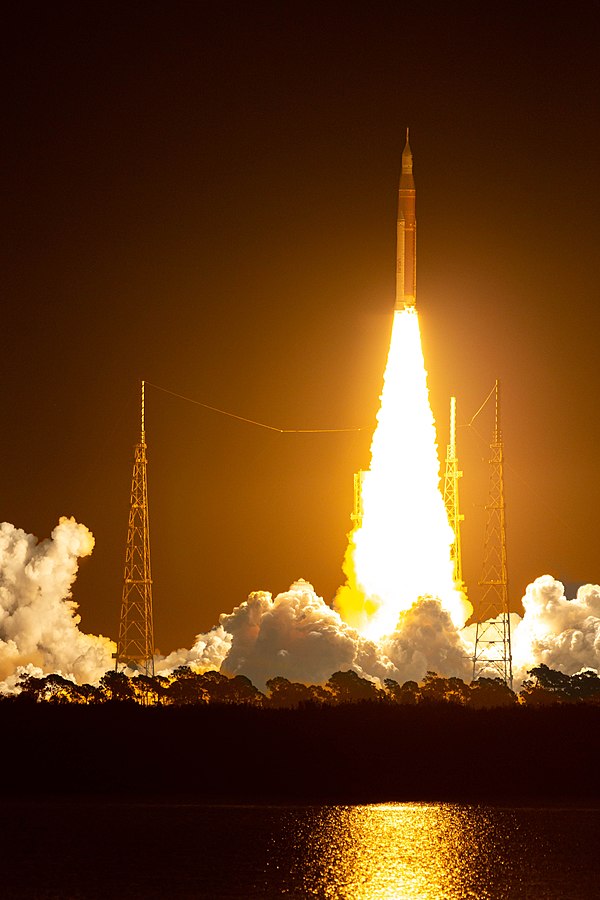
International partners are critical for the success of the Artemis program. They are providing expertise, technology, and funding across the spectrum from basic science and engineering to specific software and hardware mission deliverables. A few examples highlight the benefits of leveraging the capabilities of US allies and partners.13Here, country/agency designations simplify complex agreements between public and private entities, sometimes across borders, showcasing the need for processes and relations that enable allied cooperation. The ESA is contributing to the construction and operation of the Gateway and the Orion service module. Canada is delivering several critical components of the Gateway,14Canadian Space Agency, “Canada’s Role in Moon Exploration,” Canadian Space Agency, February 28, 2019, https://www.asc-csa.gc.ca/eng/astronomy/moon-exploration/canada-role.asp. while Japan and the ESA are building important components of habitation modules. Navigation, tracking, and communication capabilities are key contributions from Australia; an ESA program will also provide lunar telecommunications and navigation.15“Moonlight,” ESA, accessed March 9, 2023, https://www.esa.int/Applications/Telecommunications_Integrated_Applications/Moonlight. Other important hardware, subsystems, and expertise will be supplied by space agencies such as those of Italy16Fulvia Croci, “Artemis Mission: Signed Agreement Between ASI and NASA,” ASI (blog), Italian Space Agency, June 16, 2022, https://www.asi.it/en/2022/06/artemis-mission-signed-agreement-between-asi-and-nasa/. and the United Kingdom. Moreover, allied companies are partners in the design, development, and deployment of capabilities underlying the Artemis program.
Today, US and allied cooperation in space rests on the Artemis Accords,17“The Artemis Accords: Principles for Cooperation in the Civil Exploration and Use of the Moon, Mars, Comets, and Asteroids,” NASA, October 13, 2020, https://www.nasa.gov/specials/artemis-accords/img/Artemis-Accords-signed-13Oct2020.pdf. a set of principles, guidelines, and best practices for peaceful civilian space exploration building on the Outer Space Treaty of 196718“Treaty on Principles Governing the Activities of States in the Exploration and Use of Outer Space, Including the Moon and Other Celestial Bodies,” United Nations, 1967, https://treaties.un.org/doc/Publication/UNTS/Volume%20610/volume-610-I-8843-English.pdf. and subsequent policies. Key principles include peaceful operations, transparency, interoperability, and commitments to deconfliction and the collaborative management of orbital debris and space resources. The original group of eight signatories in 2020 has since expanded to twenty-three as of March 2023, with representation across the globe from the Americas, Europe, the Middle East, the Indo-Pacific, and Africa.
Signatory nations host mature or developing industries directly or indirectly pertinent to space exploration (see Table 1), signaling strong potential for bilateral and multilateral collaboration. Notably, neither Russia nor China—the two largest competitors to allied space exploration—have signed, nor appear likely to sign, the Artemis Accords. Thus, it is imperative for the United States to follow through on its commitments to its allies and partners, demonstrating that it remains the partner of choice for open and transparent space exploration and scientific inquiry.
To project leadership in space exploration, the United States and its allies and partners ought to be first in returning humans to the Moon and landing astronauts on Mars. Most experts interviewed for this paper agreed that—with China and Russia also racing to these benchmarks—achieving these “firsts” is important for prestige, diplomacy, and establishing a strong foundation for a rules-based order in outer space, similar to that seen across traditional domains, with the goal of promoting long-term freedom and prosperity. Failure to achieve these “firsts” could arise due to Chinese achievements, insufficient allied funding and political will, geopolitical events, a catastrophic mission failure, or from the United States underutilizing the capabilities of its allies and partners, both in the public and private sectors. The latter becomes more likely due to protectionist policies, including caps on foreign contributions, and political interference in competition. Overall, early stakeholders in this new phase of space exploration will set the culture, norms, and standards that will underpin space activities for years to come—a major reason to strengthen the systems and processes that enable US-led collaboration with allies and partners.
Technological opportunities and challenges
There are numerous opportunities to facilitate, enrich, and expand collaboration in space exploration between the United States and its partners and allies. At the same time, important challenges hold back current efforts to harness allied capabilities, pointing to opportunities to improve collaboration in the coming years.
Allied opportunities in space exploration
Continuing to advance space exploration by both machines and humans requires costly, sophisticated, interdisciplinary technology development across sectors; this can only be done through the aggregate efforts of the United States and its allies and partners from start to finish.19See “State Exploration and Innovation,” UN Office of Outer Space Affairs, annual reports on national space activities and innovation accessed March 9, 2023, https://www.unoosa.org/oosa/en/ourwork/topics/space-exploration-and-innovation.html. Such international cooperation, and cooperation between the public and private sectors, will not only overcome the major technical, logistical, and scientific challenges of space exploration, but also complement Earth-focused innovation initiatives in critical technologies (see Table 1).20“Transforming Our World: The 2030 Agenda for Sustainable Development,” United Nations, 2015, https://sdgs.un.org/sites/default/files/publications/21252030%20Agenda%20for%20Sustainable%20Development%20web.pdf; and “Exploring Space Technologies for Sustainable Development,” UN Conference on Trade and Development, 2021, https://unctad.org/system/files/official-document/dtlstict2021d1_en.pdf. For example, formal and informal strategies to leverage biotechnological advances for the expansion of bioeconomies21“Report to the President: Biomanufacturing to Advance the Bioeconomy,” US President’s Council of Advisors on Science and Technology, December 2022, https://www.whitehouse.gov/wp-content/uploads/2022/12/PCAST_Biomanufacturing-Report_Dec2022.pdf. have been formulated for the United States,22White House, “Executive Order on Advancing Biotechnology and Biomanufacturing Innovation for a Sustainable, Safe, and Secure American Bioeconomy,” White House Briefing Room, September 12, 2022, https://www.whitehouse.gov/briefing-room/presidential-actions/2022/09/12/executive-order-on-advancing-biotechnology-and-biomanufacturing-innovation-for-a-sustainable-safe-and-secure-american-bioeconomy/; and White House Office of Science and Technology Policy, “Bold Goals for U.S. Biotechnology and Biomanufacturing: Harnessing Research and Development to Further Societal Goals,” March 2023. Germany,23“National Bioeconomy Strategy,” German Federal Government, July 2020, https://www.bmel.de/SharedDocs/Downloads/EN/Publications/national-bioeconomy-strategy.pdf?__blob=publicationFile&v=2. United Kingdom,24“UK Innovation Strategy: Leading the Future by Creating It,” UK Department of Business, Energy, and Industrial Strategy, July 22, 2021, https://www.gov.uk/government/publications/uk-innovation-strategy-leading-the-future-by-creating-it/uk-innovation-strategy-leading-the-future-by-creating-it-accessible-webpage. European Union,25Directorate-General for Research and Innovation (European Commission), European Bioeconomy Policy: Stocktaking and Future Developments: Report from the Commission to the European Parliament, the Council, the European Economic and Social Committee and the Committee of the Regions (Luxembourg: Publications Office of the European Union, 2022), https://data.europa.eu/doi/10.2777/997651. India,26Narayanan Suresh and Srinivas Rao Chandan, “India Bioeconomy Report 2022,” prepared for Biotechnology Industry Research Assistance Council by Association of Biotechnology Led Enterprises, June 2022, https://birac.nic.in/webcontent/1658318307_India_Bioeconomy_Report_2022.pdf. and others—including China.27Xu Zhang et al., “The Roadmap of Bioeconomy in China,” Engineering Biology 6, no. 4 (2022): 71–81, https://doi.org/10.1049/enb2.12026. Together, allied and partner space agencies play crucial roles as early funders of the science, engineering, and business development of space and space-adjacent products and services that will both benefit from and drive space exploration in the coming decades; they also serve as early (and often sole) clients for these products and services.
Autonomous robotic system28Issa A. D. Nesnas, Lorraine M. Fesq, and Richard A. Volpe, “Autonomy for Space Robots: Past, Present, and Future,” Current Robotics Reports 2, no. 3 (September 1, 2021): 251–63, https://doi.org/10.1007/s43154-021-00057-2. are an illustrative example of how collaboration around a major technology objective for space exploration can overcome a series of challenges and deliver benefits across both Earth and space. Such systems rely on sophisticated integration of sensors, robotics, microelectronics, imaging, and computation. Depending on the target application, they must withstand extremes in temperature, radiation, gravity, pressure, resource constraints, and other parameters. Autonomous operation is imperative because of the vast distances that signals must travel (the one-way time delay for operating a robot on the asteroid closest to Earth that may be suitable for mining, 16 Psyche, is at least ten minutes).29Smiriti Srivastava et al., “Analysis of Technology, Economic, and Legislation Readiness Levels of Asteroid Mining Industry: A Base for the Future Space Resource Utilization Missions,” New Space 11, no. 1 (2022): 21–31, https://doi.org/10.1089/space.2021.0025. Trusted (cybersecure) autonomous robotic systems will be critical for resource extraction, safety, human health, and sustainability in space environments; related technology development is benefiting Earth-based applications such as mining, surgery, supply chains, and transportation. The European Space Resources Innovation Center—a partnership of the Luxembourg Space Agency, the Luxembourg Institute of Science and Technology, and the ESA—is running an incubation program for early projects around utilizing space resources,30“ESRIC: Start-up Support Programme,” ESRIC: European Space Resources Innovation Centre, accessed March 9, 2023, https://www.esric.lu/about-ssp. a salient example of how public and private entities can cooperate to drive capabilities for exploration and commercialization. All experts interviewed for this paper agreed that the quicker pace, receptiveness to risk, and sensitivity to costs and markets of commercial endeavors can benefit public-private partnerships for space exploration.
Challenges to allied space exploration
Despite the affordances of international cooperation, systems and processes can make it difficult to harness allied capabilities. Protectionist activity by the United States and its allies and partners can arise when a single government has made large investments in research and development, hindering the transfer of technologies, personnel, information (including unclassified information), and data across borders. Many of the technologies shown in Table 1 appear on lists of critical, emerging, and breakthrough technologies from the United States,31“Critical and Emerging Technologies List Update,” Fast Track Action Subcommittee on Critical and Emerging Technologies of the National Science and Technology Council, February 2022, https://www.whitehouse.gov/wp-content/uploads/2022/02/02-2022-Critical-and-Emerging-Technologies-List-Update.pdf. European Union,32European Innovation Council, “Identification of Emerging Technologies and Breakthrough Innovations,” January 2022, https://eic.ec.europa.eu/system/files/2022-02/EIC-Emerging-Tech-and-Breakthrough-Innov-report-2022-1502-final.pdf. and other public and private organizations. This complicates collaboration, as many of these technologies are dual use and under intense Chinese scrutiny/competition, and are thus subject to export regulations—in some cases, even to US allies.
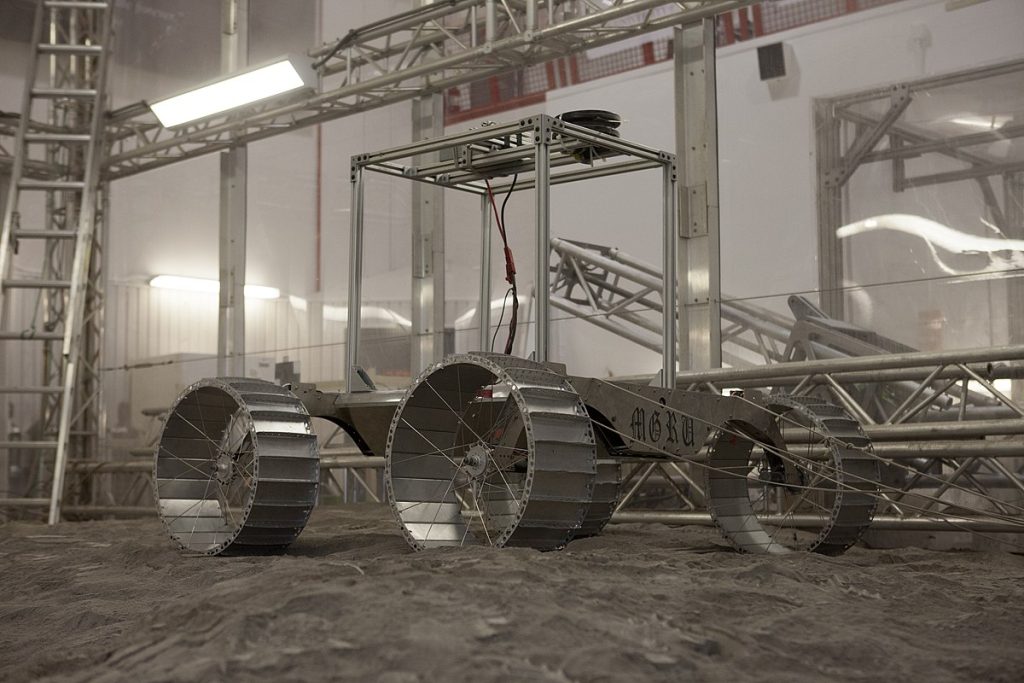
Notably, space exploration and the technology segments in Table 1 support concentrated, high-paying jobs with strong economic impact,33Yittayih Zelalem, Joshua Drucker, and Zafer Sonmez, “NASA Economic Impact Report 2021,” Nathalie P. Voorhees Center for Neighborhood and Community Improvement, University of Illinois at Chicago, October 2022, https://www.nasa.gov/sites/default/files/atoms/files/nasa_fy21_economic_impact_report_full.pdf. and are therefore subject to political protection from competition, from allies, and/or between the public and private sectors. For example, the US Congress’s NASA Authorization Act of 2010 called for the reuse in the SLS of components of the Space Shuttle, with reliance on legacy suppliers, infrastructure, and personnel.34National Aeronautics and Space Administration Authorization Act of 2010, 42 U.S.C. 18301 (2010). The resulting SLS is not reusable, and a single launch may cost upward of $1 billion.35“The Cost of SLS and Orion,” Planetary Society, accessed March 9, 2023, https://www.planetary.org/space-policy/cost-of-sls-and-orion. In contrast, SpaceX (one of several companies developing rockets) claims that its Starship is fully reusable, has a larger payload, has much lower development costs (which have been partially funded by NASA), and—controversially—may have operational costs of less than $10 million per launch within the next few years.36Kate Duffy, “Elon Musk Says He’s ‘Highly Confident’ That SpaceX’s Starship Rocket Launches Will Cost Less than $10 Million within 2-3 Years,” Business Insider, February 11, 2022, https://www.businessinsider.com/elon-musk-spacex-starship-rocket-update-flight-cost-million-2022-2. Several experts interviewed for this paper suggested that a healthy sense of competition between the public and private sectors could encourage government space agencies to support ambitious timelines and budgets while upholding their commitment to safety.
Harnessing allied space capabilities will be key for constraining duplication of efforts and optimizing value creation, resource sharing, technology transfer, and costs. Over time, the hardware, software, and data from exploration missions will support off-Earth communities of increasing size, complexity, and duration in LEO, cislunar space, the Moon, Mars, asteroids, and beyond—underscoring the importance of harnessing allied capabilities in these technology areas for space exploration today.
Table 1: Allied and partner offerings in key space exploration technologies
This table includes select nations with a strong history of space- and/or Earth-related success within a specific technological segment (examples labeled “Now”) and/or have burgeoning commercial sectors worth examining (examples labeled “Next”). Note: This table is not exhaustive.
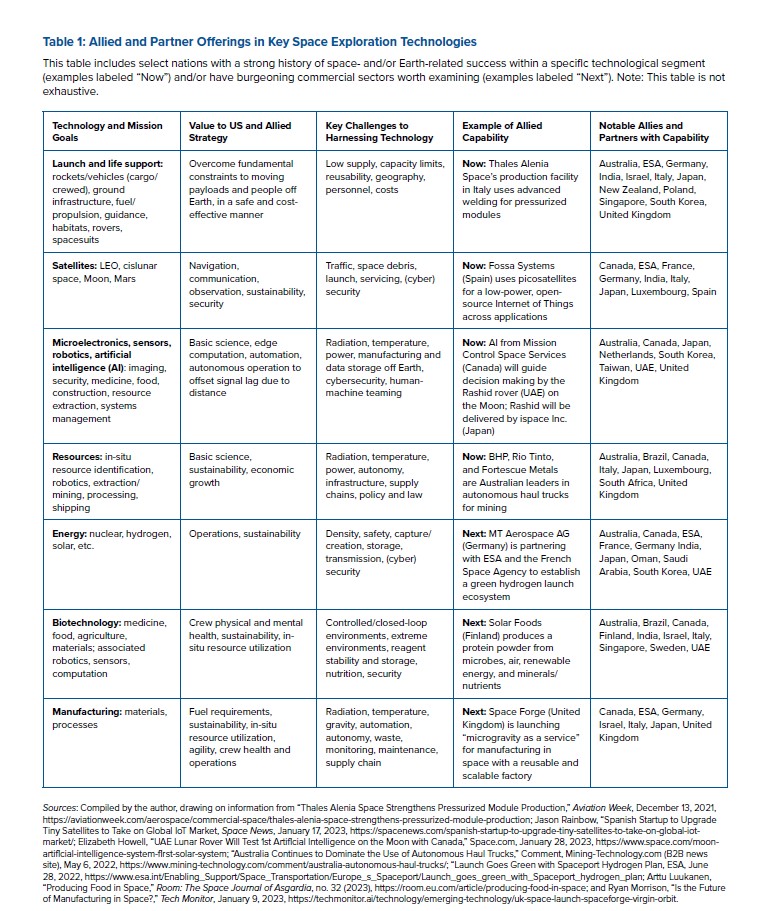
Recommendations and conclusions
Harnessing allied capabilities is crucial for future space exploration, with major potential benefits to life on Earth as well. The US government, working alongside allied and partner governments, should therefore consider the following next steps:
Recommendation #1: US government actors—including Congress, the Department of Commerce’s Bureau of Industry and Security, the State Department including its Directorate of Defense Trade Controls, and the Defense Technology Security Administration in the Office of the Secretary of Defense—should reexamine and reform Export Administration Regulations. Priority should be given to potential reforms that strengthen the United States’ position as an orchestrator of complex international collaborations and supply chains, in contrast to a paradigm of the United States as a globally dominant, unilateral player. Support from executive- and ministerial-level offices is essential.
Effects include:
- Promote removal of friction in international collaborations and public-private partnerships.
- Enable reciprocity in cooperation (including data transfer and potential to bid).
- Balance safety with risk.
- Render attractive the inclusion of US companies and government bodies in allied workflows, supply chains, and markets, particularly for businesses in emerging technologies.
- Support short-term economic and security goals as well as long-term diplomatic efforts, particularly with close allies and partners.
Recommendation #2: NASA and the National Space Council should collaborate with allied space agencies, both national and international, to identify opportunities to engage in space exploration at whatever level of contribution is individually appropriate, given the state of maturity of allied sectors (see Table 1) and geopolitics. For example, allies could contribute commodities or launch locations rather than mature costly software or hardware. Attention should be paid to maturing industries to identify opportunities for early relationships and processes that will accelerate space exploration.
Effects include:
- Decentralization to improve the resilience of space exploration to disruptions in funding, supply chains, politics, and unexpected but highly impactful events.
- Diplomacy and inspiration of young workers.
- Expansion of the community of active stakeholders in space exploration aligned with democratic values, with the United States serving as the trusted partner.
Recommendation #3: The Office of Science and Technology Policy, Office of the Secretary of Commerce, Department of Defense, and other US interagency actors should identify and support synergies between technology development for space exploration and for Earth-focused innovation in critical technologies. New multistakeholder (cross-border) grants, fellowships, seed funding, and prizes should be modeled on current international efforts like XPRIZE and the Deep Space Food Challenge. Programs such as the NASA Innovative Advanced Concepts and the ESA Open Space Innovation Platform, which incubate early-stage innovations in space exploration, should be expanded to noncitizens.
Effects include:
- Risk-mitigated financial support of early and maturing technologies for space exploration.
- Exchange of human capital across public/private, international, Earth/space, and industry boundaries.
Recommendation #4: Through organizations like the United Nations Office for Outer Space Affairs, international stakeholders in space exploration—including space agencies, companies, philanthropic groups, and nongovernmental organizations—should formulate an actionable, unified multilateral space strategy that goes beyond the Artemis Accords. For example, while the Artemis Accords recognize “the global benefits of space exploration and commerce,” they do not explicitly address commercial activity, and commercial enterprises are not signatories. Action is urgently needed, as it is conceivable that extraction and exploitation of lunar resources could begin in the very short term—in the mid 2020s. An expanded space strategy must include the commercial sector.
Effects include:
- Identification of pathways to create/strengthen linkages among stakeholders and eliminate choke points that render exploration vulnerable to disruption and negative outcomes.
- Establishment of rule of law and crisis-mitigation strategies spanning early crewed and uncrewed exploration missions through permanent human habitation off Earth, including commercial activity.
In conclusion, just as no one could have foreseen the precise progression from the Wright brothers’ first flight to today’s rapidly exploding telecommunications and space industrial ecosystems, one cannot expect to accurately predict the progression—or the ramifications—of today’s space exploration to tomorrow’s future. Nonetheless, international collaboration is certainly key to success. Now is the time to enhance the processes, relationships, and shared vision for space exploration, thereby expanding humankind’s knowledge of the universe, improving life on Earth, and setting the stage for a reliable, routine, and prosperous space economy for all.
Generously Sponsored By

About the author
Watch the launch event

Forward Defense, housed within the Scowcroft Center for Strategy and Security, generates ideas and connects stakeholders in the defense ecosystem to promote an enduring military advantage for the United States, its allies, and partners. Our work identifies the defense strategies, capabilities, and resources the United States needs to deter and, if necessary, prevail in future conflict.
Image: People attend an NASA event during which the crew of the Artemis II space mission to the moon and back is announced in Houston, Texas, U.S., April 3, 2023. REUTERS/Go Nakamura

